Some several months back, you know, in that time BC (Before COVID), I’d started writing a separate series of posts on how to live a Zero Waste Life. If you pop over there, you’ll see that this initiative didn’t survive much past first contact with the ‘Rona so, although there’s a couple of vaguely interesting posts, it’ll probably stay withering on the vine. It’s a fellow orphan to Salute The Fish and Salute The Grains — both of which however I do intend resurrecting at some point — especially the latter, as I’m supposed to be collaborating with the very wonderful Val Littlewood on a joint effort, one similar to our Salute The Pig book.
But probably not today…
This coming month, I’m taking another short-story writing course at City-Lit, so as well as limbering up the unused & foggy brain muscle and putting down ideas for that, I knew I also wanted to keep on writing here. Both long-form articles and more “flash-fiction” type quick pieces. This one has to be one of the former as Val just asked if it was going to be “meaty”, as in deep, rich & full of flavour. I promised it would be and then immediately flashed on the old Who compilation album, “Meaty Beaty Big & Bouncy”
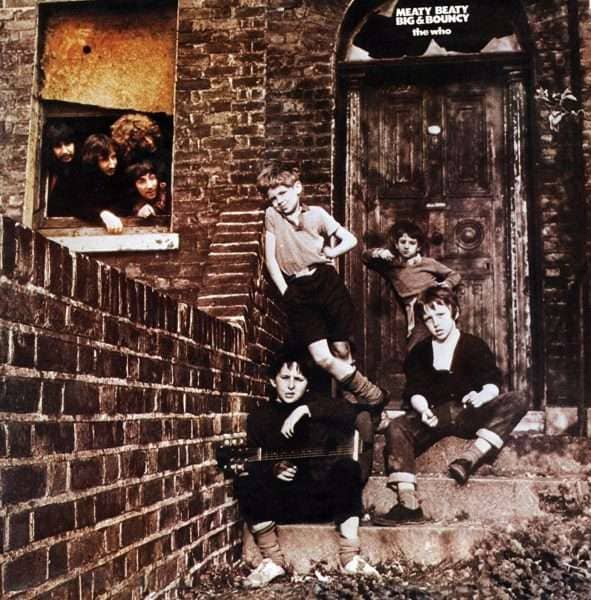
I always thought The Who were the guvner band. The Stones were great, of course, but The Who were somehow more real, more mine, tougher yes — real hard Shepherd’s Bush boys — but also curiously vulnerable. And this compilation in 1971 made it easy for an impecunious 14-year old such as I, to round up all the singles and B-sides in one easy gulp. And, believe it or not, it was only today that I found out that the title was named after the four of them — in order Daltrey, Moon, Entwistle and Townsend. Who knew, eh?
Then straight after that I heard Tracey Chapman singing “Fast Car” on the radio & immediately felt tears prickling. I hadn’t heard her voice for ages. My lovely younger sister Liz — who died of breast cancer many years back, Feb 2005 — loved her.
Here she is in Paris with Mum.

Which of course, led me to the old blog here and I spent a few minutes catching up on what we were doing in the early 2000s when we’d moved to Spain.
Anyway, enough of the nostalgia; instead moving onwards and upwards in as optimistic a manner as possible. I don’t have the bandwidth to handle more than one writing site at the moment, so STP is going to be the focus until such time as the COVID brain fog dissipates. I apologise for banging on about this but I saw this new definition today, useful for when some well-meaning person asks how you’re doing:
P𝐚𝐧𝐝𝐞𝐦𝐢𝐜 𝐟𝐢𝐧𝐞 — 𝑛𝑜𝑢𝑛 — “a state of being, in which you are employed and healthy during a pandemic but you’re also tired and depressed and feel like shit all the time.”
And so to work.
1. The 1-percent tax.
Came across this recent interview with Anthony Myint of Mission Street Food restaurant fame. His book is a fun delight & well worth sniffing out.

The interview is available here where he’s talking about what we all — but most especially the food professionals — can do to help avert climate change.
One of his main suggestions via his Zero Footprint non-profit initiative, is simply to levy a 1% fee on all food transactions. As he says:
“If we take a real honest look in the mirror, if you’re paying $100 for a Michelin-starred meal and it’s [raised to] $101, it doesn’t matter. If you’re paying $10 for a sandwich and it’s $10.10, it doesn’t matter,” he says. “No one can tell me with a straight face that’s impossible.”
I think it’s great. I think we could get it to work quite easily. Then take that 1% and feed it back up the supply chain, to the small producers & farmers to help them de-carbonise their processes. And it’s a much easier & more do-able ask than demanding that people only buy local or have to give up meat or that they must take the revolution to the streets to demand that The Man gets rid of the big supermarkets and other polluting agri-businesses. I mean some of us are a lot older now — the street fighting man/woman of our youth is a little less limber nowadays…
2. The sea, the sea.
How about harvesting ‘rice’ from the sea?
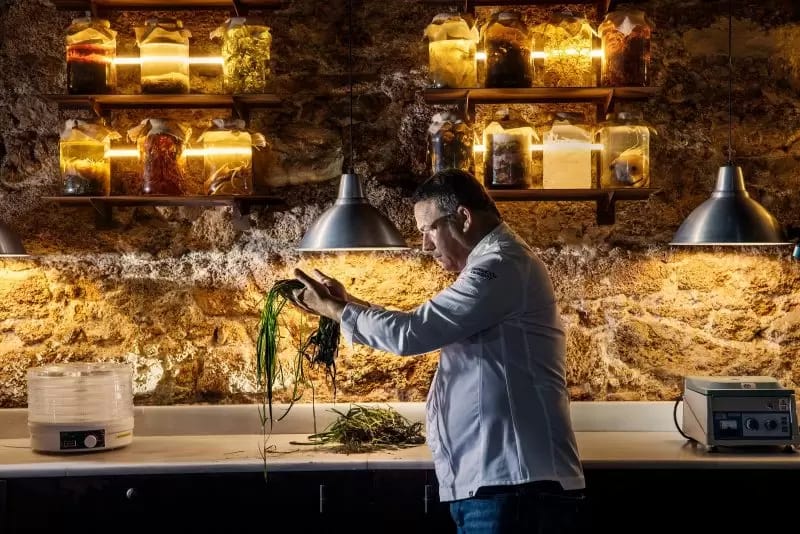
This idea comes from the deeply, deeply weird but fertile brain of the Spanish chef Ángel León of Aponiente, in El Puerto de Santa María. He’s mentioned briefly on Salute The Fish & his credo here could be read as “pretentious, moi?” bollocks.
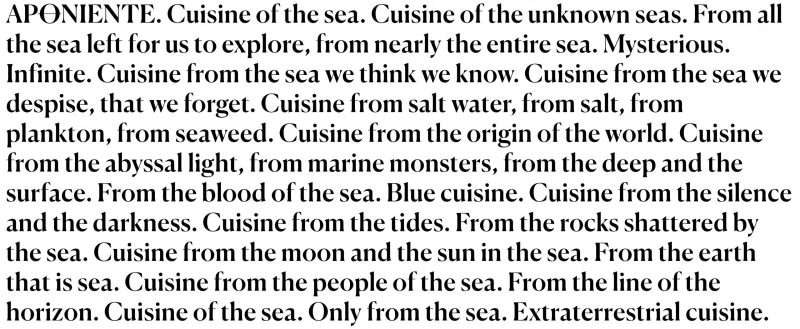
Except. Except, that it’s a fish restaurant, one unlike pretty much any other, one that’s aiming to totally eliminate fish from their menu within a few years. Instead, acknowledging as they do that less than 20% of the available marine flora & fauna is harvested; that most popular fish stocks are dangerously overfished and that global warming has set the marine ecosystems & its biodiversity into what may well turn out to be a death spiral, they instead utilise edible plankton & edible crustacean shells, use marine sugars, seaweeds and sea vegetables, whilst they make their ‘cheeses’ & ‘charcuterie’ from what traditionally are fish discards.
His latest menu was, before the country went into lockdown again (how many more times will we have to hear those words…) and I quote:
“an edible interpretation of the tidal marshes. There would be emerald puddles of plankton butter and marine bone marrow and burrata forged from sea snails. For León, the star of the season was the gusana del mar, a species of sea worm.”
They’re obviously doing something right (if you consider that the award of 3 Michelin stars is the benchmark. I mean I honestly don’t, I think the Michelin system is deeply flawed, deeply divisive and pretty much non-inclusive of anyone other than a very few favoured stars, so I wouldn’t depend on that as a marker, but then this is probably a discussion for another post).
Anyway, I’m still a lot, lot slimmer than the European tyre guy, and I totally think that León is doing the right thing. He’s said:
“Respect and recycling form a mentality and a way of life”
and that’s 100% fine by me. If your Spanish is less rusty than mine, I reckon his 2018 manifesto — written along with 67 other top chefs — is to be recommended. And, in passing, I totally want this detail on MY wall. If only I knew an artist or designer…
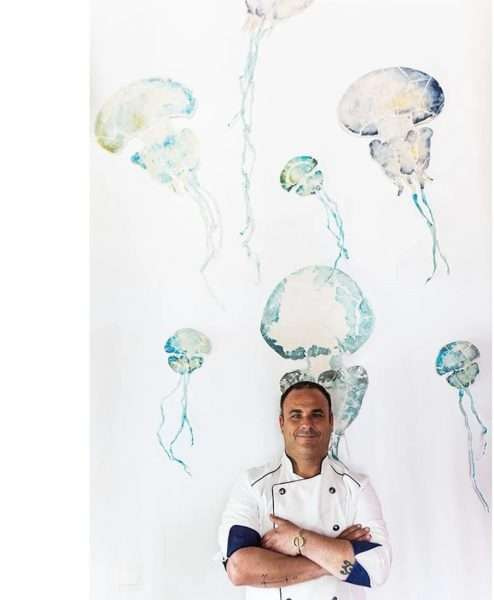
This ‘rice’ or actually the grains from the sea eel-grass is his passion now and, in conjunction with the University of Cadíz, he’s been experimenting on them for the past 3 years or so.
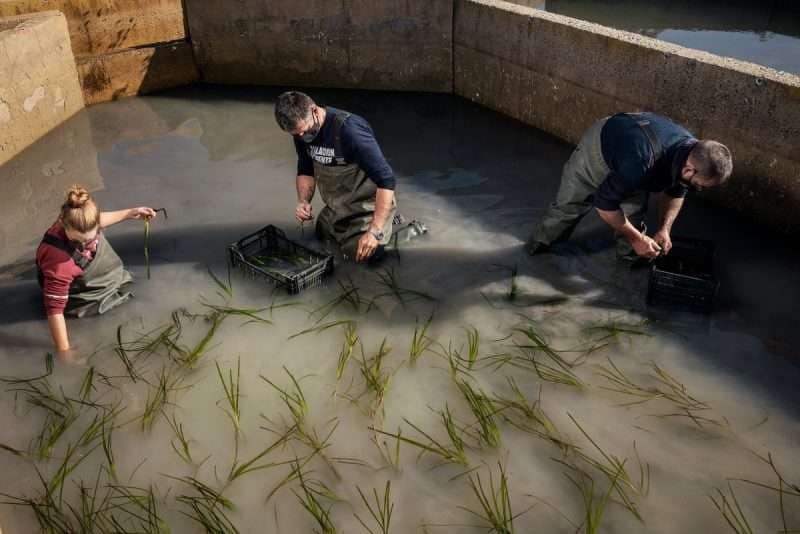
And this laser-sharp focus seems to be paying off.
“The first thing you notice is the texture: taut-skinned and compact, each grain pops on your tongue like an orb of caviar. It tasted like the love child of rice and quinoa with a gentle saline undertow.”
He’s hoping that the team can encourage governments to assist its growth along coastlines everywhere it’ll grow — obviously in Asia and the Americas but, above all else as it’s so close to home, on the African Mediterranean coast — hoping to get them behind a plan to turn millions of hectares into a source of sustainable, local and nutrient rich food, a source that also acts as protection against coastal erosion and a potent weapon in the fight to reduce climate change.
This long piece here by Matt Goulding is fascinating. I’ve re-read it 3 times now. I’d suggest you do the same. And remember, not all Michelin recognised chefs are sexual predators and/or sociopaths. Some are very much on the side of the angels…
3. Gold from the West Country.
A pig-breeder friend of mine, Martha Roberts, breeds Old Spots in Wales and she mentioned, in passing in a Tweet, the now extinct Dorset Gold Tip, a ‘breed’ that apparently originated in the 19th century from a Tamworth crossed with a Berkshire (and possibly with some additional Gloucester Old Spot ancestry, of course). A (relatively rare) breed, it had slightly lopped ears, with (like the Tamworth) a reddish base to its coat, black spots whilst the hairs had gold tips, giving the breed its name.
This is claimed to be a picture of one of them although as I’ve moaned before, some of these ‘breeds’ are little more than a few herds ginned up in a 19th C. marketing attempt to differentiate your truly excellent stock from that of your neighbours, horribly scraggy, mongrel types, ones bred only a few hundred yards away but still, just across the border in another county; Wiseman in his “A History Of The British Pig” (op. cit.) is rightly excoriating about the problems with using this type of precise geographical nomenclature with any breed.
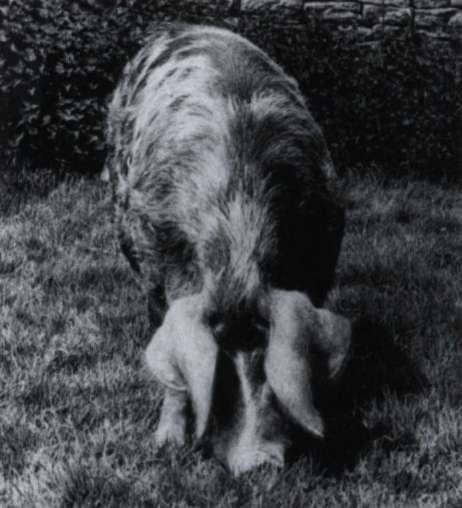
Bred for quick growth, early maturation, a lot of fat — from those more halcyon times when proper fatty bacon was more desirable for most people — and extreme size (some specimens were so large they were allegedly unable to even raise themselves to stagger out of their pens). By 1955, only one boar was officially still registered (although the Dorset Gold Tip Pig Society managed to limp on until 1961) and the breed will have become extinct by the 1970s.
They’re really just an historical curiosity, a brief road-stop, so I’ve not bothered adding this to the main category of rare breeds.
4. Finally? Finally, feastings.
Tonight, we’re having pie, mash & peas, with some liquor if I can dig out sufficient parsley. The Tourtière (spiced meat) pie comes from the Canadian team at Manchester based Blue Caribou (they also do a banging poutine)
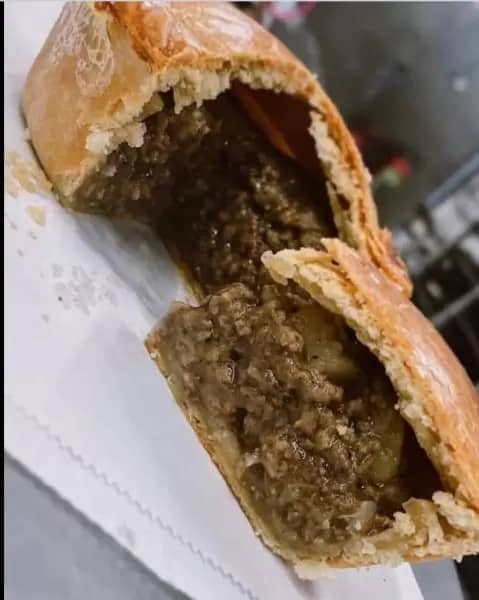
with mushed blue peas from the amazing lot at Hodmedods

and mashed red Duke Of York 1942 spuds…
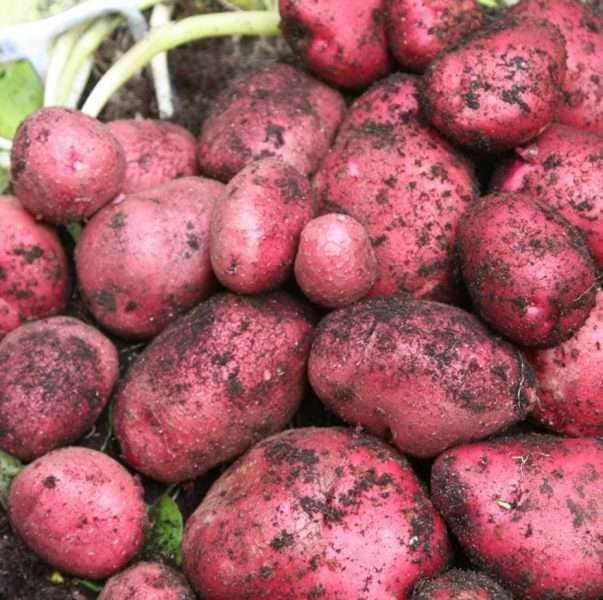
…which you can source via Carroll’s, the Northumberland based dedicated heritage potato growers. I’ll add a dash of Chinese black vinegar to the peas to cut their sweetness, whilst the mash will contain a metric fuck-ton (that IS an official term of weight by the way) of the fermented cultured butter…
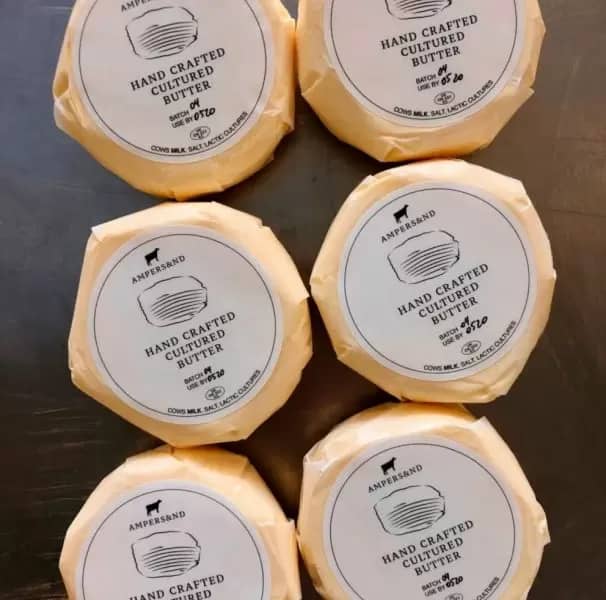
…from Grant Harrington’s team at Ampersand Dairies. He learnt his craft in some top-end kitchens latterly whilst working with Magnus Nilsson at the (now shuttered) Faviken and his own book on “Bread & Butter” is well worth your pennies and time.

See you later…